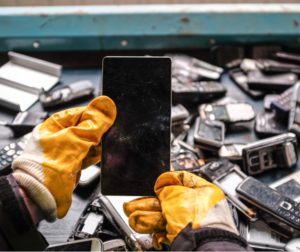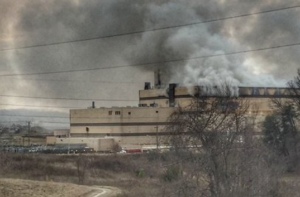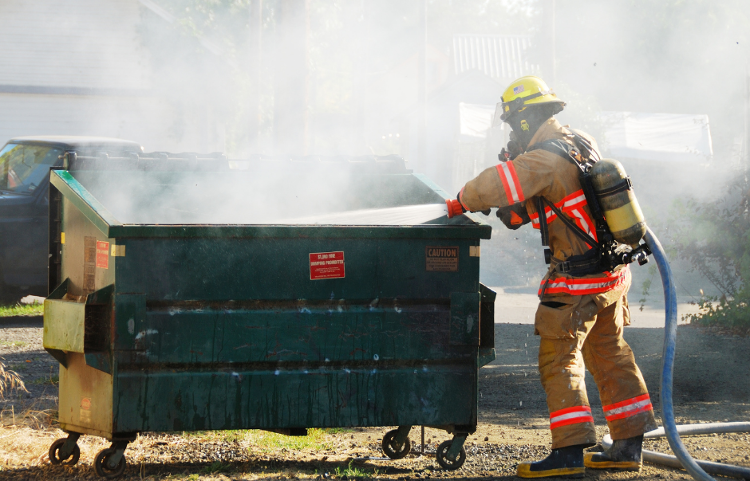How do dumpster fires start?

The photo of the dumpster on fire has become ubiquitous in 2020 and analogous of an unprecedented year coming to a close, but do you know what actually causes a dumpster or waste fire? Fires can begin when hazardous and electronic waste items are discarded in the trash rather than recycled appropriately. Unfortunately, it does not stop at the dumpster. Hazardous and electronic waste materials holding lithium-ion batteries are often discarded in the trash or recycling containers, which are then collected by a garbage truck and transferred to a facility where the waste is dumped and sorted or processed. Fires can start anywhere along that journey. Batteries can spark and start a fire can simply from a device being tossed around within a metal dumpster or truck.
Between May 2019 and April 2020, a total of 333 facility fires were reported within the waste and recycling industry which account for about 40% of all facility fires reported in that time period – that’s a huge chunk sourced from the industry alone!
How is the industry responding to these fires?

Waste and recycling facilities are responding to these fires by installing fire safety equipment to better handle or prevent fires when waste reaches the facility. Covanta Fairfax, a waste to energy facility in Virginia ignited in flames in early 2017 from a lithium-ion battery that was thrown in with the municipal solid waste. When re-building, they installed new technology including thermal imaging cameras, a noncombustible roof system, upgraded sprinklers, and more to be able to detect and contain a fire.
Waste company employees are also trained to not pick up a dumpster if they can visibly see hazardous or electronic waste within the containers at the time of pick-up.
What can you do as an individual consumer or business to prevent these fires?
In addition to the waste and recycling industry working to prevent these fires or contain them, we as individual consumers have a role to play to keep hazardous items out of dumpsters and recycle them appropriately with a certified electronic or hazardous waste recycling vendor. Here are some helpful safety tips to consider:
Businesses
- Educate employees about proper separation practices and why it is so important to recycle hazardous and electronic items appropriately
- Partner with a credible electronic and hazardous waste recycling vendor that will help set up your program, provide you with the appropriate educational resources to make it easy for all to participate, and follow appropriate state and federal regulations for handling and recycling these waste streams safely.
Individual consumers
- Hold onto your batteries, personal electronics containing lithium-ion batteries, or any hazardous waste materials and dispose of them properly at a recycling center that collects these waste streams. Check with your local municipality to find out where and when they collect these waste streams for recycling and participate in this program. Do not place them in your recycling bin with your metal, glass, plastic, and paper or in your trash bins.
- In addition, check in with a local electronics store to see if they have a take back program or recycling program where you can drop off old electronics and batteries.
Tips for everyone
- Do not throw ashes or cigarette butts in a trash container, you never truly know what’s in a dumpster that can ignite when in contact with ash or cigarettes.
- Support legislation to expand electronic waste and hazardous waste collection within your municipality to make recycling these waste items more convenient.
- Start a recycling program in your building to make it easy for residents or employees to recycle these items so they are less likely to throw them away in the trash.
To learn more about how to keep waste out of landfill, subscribe to our blog, or speak with one of our TRUE Waste Advisors to learn how to improve waste in your business.

